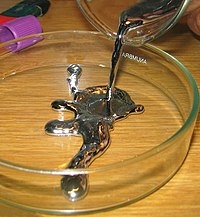
Earthworms increase forest litter mass loss irrespective of deposited compounds – A field manipulation experiment in subtropical forests
Sign Up to like & getrecommendations! Published in 2023 at "Ecology and Evolution"
DOI: 10.1002/ece3.10047
Abstract: Abstract Earthworms modulate carbon and nitrogen cycling in terrestrial ecosystems, but their effect may be compromised by the deposition of pollutants from industrial emissions. However, studies investigating how deposited compounds affect the role of earthworms… read more here.
Keywords: mass loss; deposited compounds; litter mass; decomposition ... See more keywords

Accounting for photodegradation dramatically improves prediction of carbon losses in dryland systems
Sign Up to like & getrecommendations! Published in 2017 at "Ecosphere"
DOI: 10.1002/ecs2.1892
Abstract: Traditional models of decomposition fail to capture litter mass loss patterns in dryland systems. This shortcoming has stimulated research into alternative drivers of decomposition, including photodegradation. Here, we use aboveground litter decomposition data for dryland… read more here.
Keywords: photodegradation; decomposition; mass loss; litter mass ... See more keywords

More frequent droughts slow down litter decomposition across European agroecosystems and increase the importance of earthworm functional diversity
Sign Up to like & getrecommendations! Published in 2020 at "Applied Soil Ecology"
DOI: 10.1016/j.apsoil.2020.103628
Abstract: Abstract Effects of increasing rainfall variability and weather extremes on litter decomposition are still uncertain, especially in agroecosystems, where the functional structure of soil communities is already affected. We conducted a mesocosm experiment to evaluate… read more here.
Keywords: mass loss; litter mass; litter decomposition; across european ... See more keywords

Effects of Terrain on Litter Decomposition and Nutrient Release in Typical Steppe of Eastern Gansu Loess Plateau
Sign Up to like & getrecommendations! Published in 2020 at "Rangeland Ecology and Management"
DOI: 10.1016/j.rama.2020.06.004
Abstract: ABSTRACT Terrain can influence vegetation composition, diversity, and biogeochemical cycling in grassland ecosystems. Solar radiation, soil temperature, and moisture distribution are dependent on terrain, which, in turn, can affect plant community structure, rate of litter… read more here.
Keywords: litter mass; soil temperature; typical steppe; rate ... See more keywords